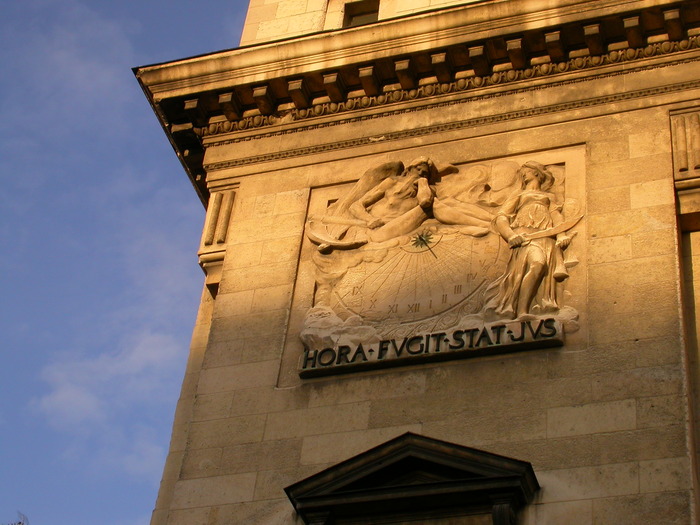
A working sundial.
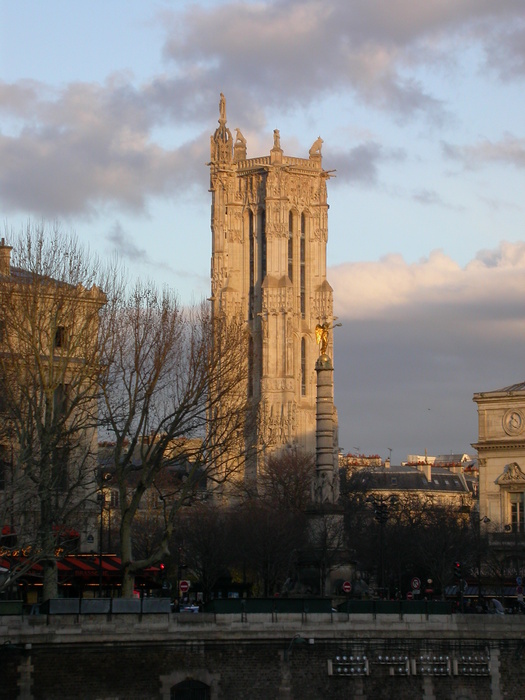
Another view of Saint Jacqúes. I'm not sure what the golden Victory belongs to, although the steep drop off the edge of the street means that this is probably the view of Saint Jacqúes from over the river.
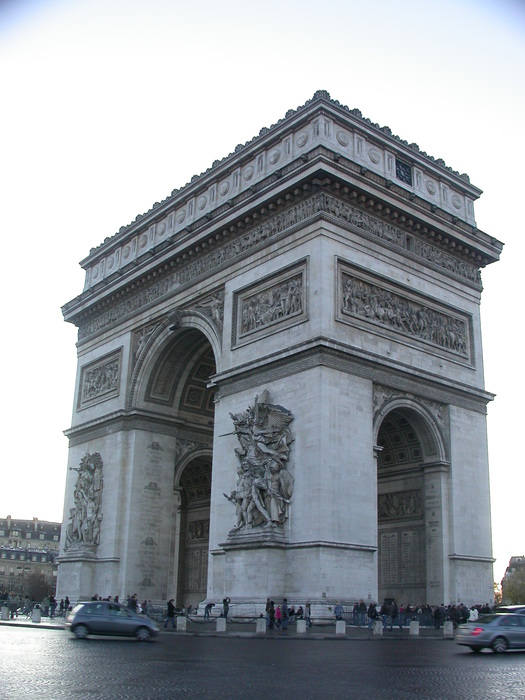
Next stop, Arc de Triomphe. This was Napoleon's idea; he promised his soldiers that they would return under triumphal arches
, as the conquoring Romans often did. It was not completed until 30 years later, long afer Napoleon's fall. It stands on one of the taller hills in Paris, and its architect observed that, in order to appear grandiose on such a high hill, it would need to be absolutely colossal in size.
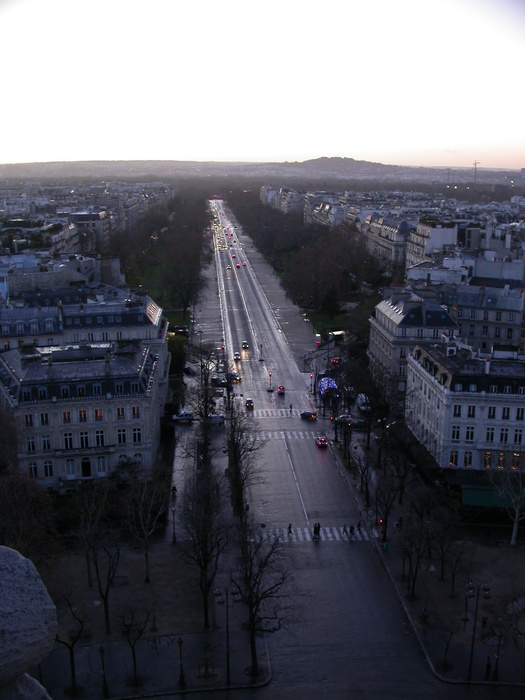
Not a bad place to watch the sun set, either. Eric observes that the streets and buildings in its immediate vicinity are shaped around the circle containing the arch.
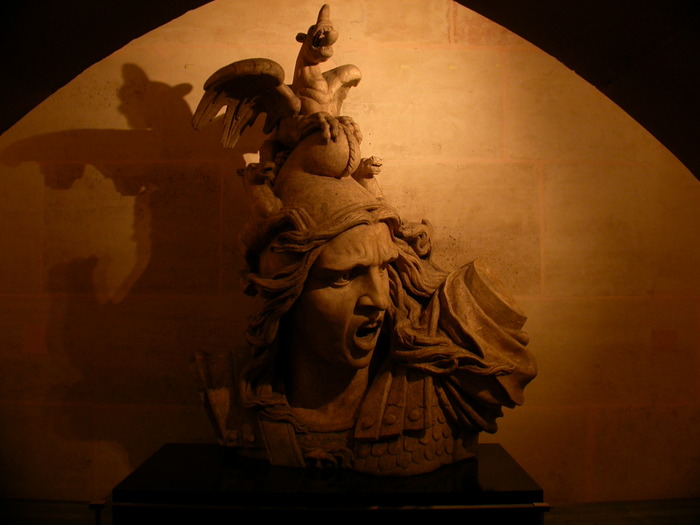
A cast of the head of a figure from La Marseillaise
, one of the four friezes on the outside of the arch. From this angle she looks like someone has just flashed her.
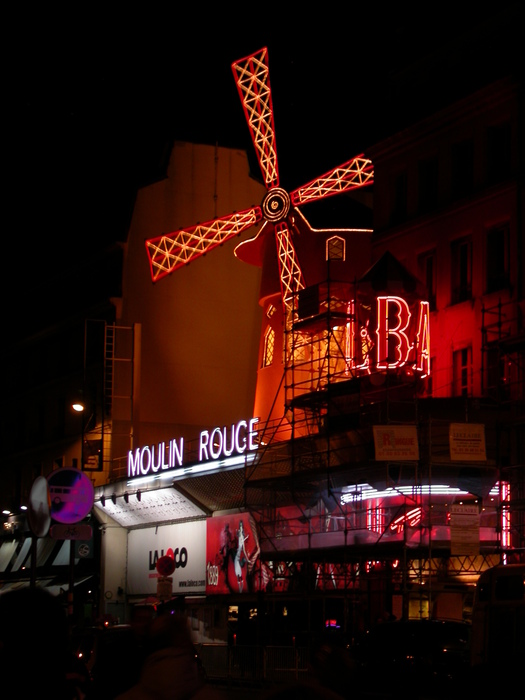
The famous Moulin Rouge, the red mill
, where you can have your heart's desire... starting at 150 euros per person for dinner, show, and a half champagne
. We skipped it. Instead we went to the Erotic Art museum for 8 euros. You have to be over 18 to find this page.
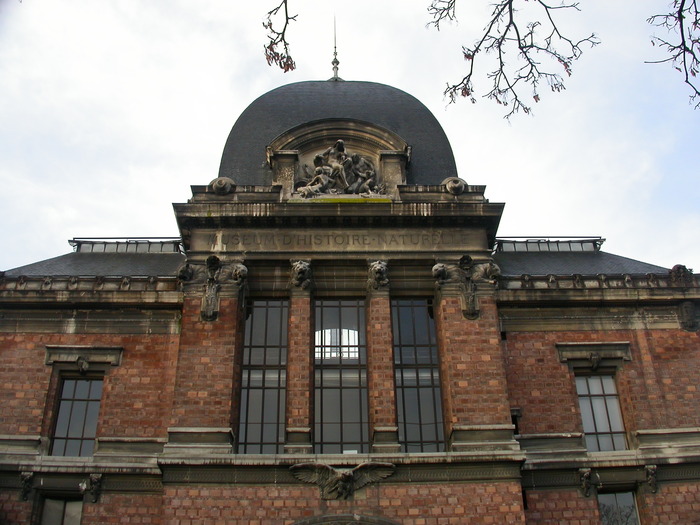
The next day we decided to stop by the Museum d'Historie-Naturelle: Paris's natural history museum. France has managed to produce a few scientists as well as French wine, so we figured there might be some good stuff here.
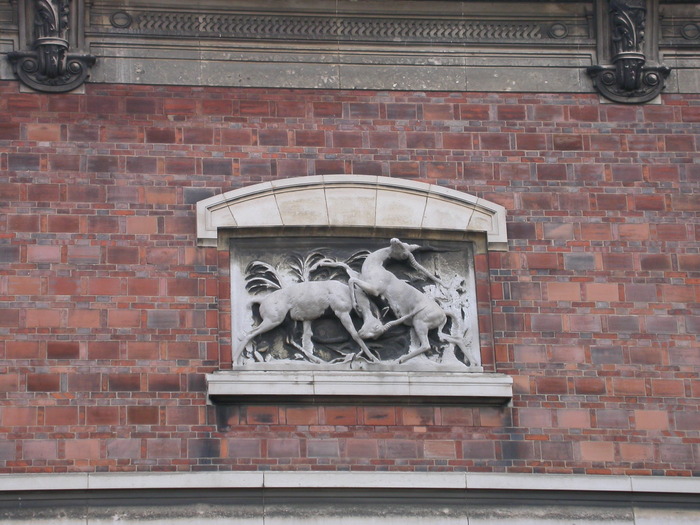
We actually arrived before the museum opened, so we spent some time wandering around outside. The first thing I noticed is that the images of animals on the outside of the building are rather different than the ones, for example, decorating the walls of the Saint Louis zoo.
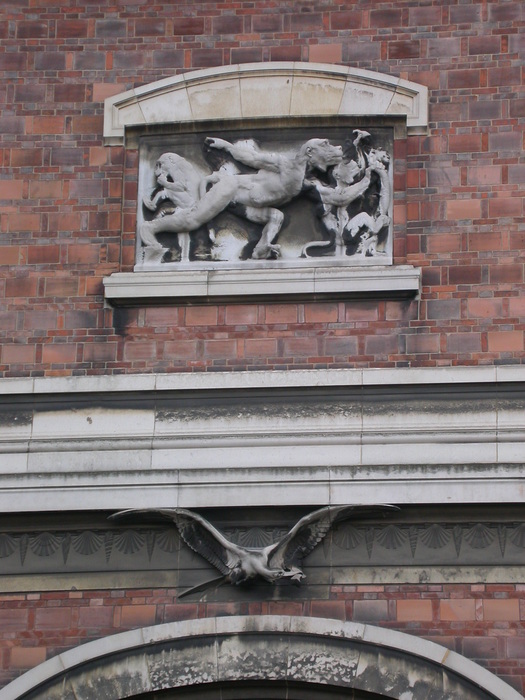
They are peculiarly fanciful... well, artistic. The union of art and science. Who'd have thought it?
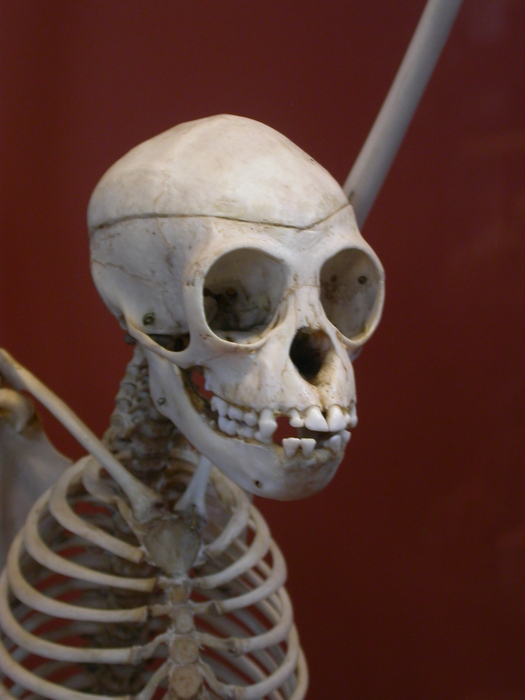
First stop: primates. This is a small monkey, with very little to distinguish it from a human skull other than a little more sloping at the incisors, and the size.
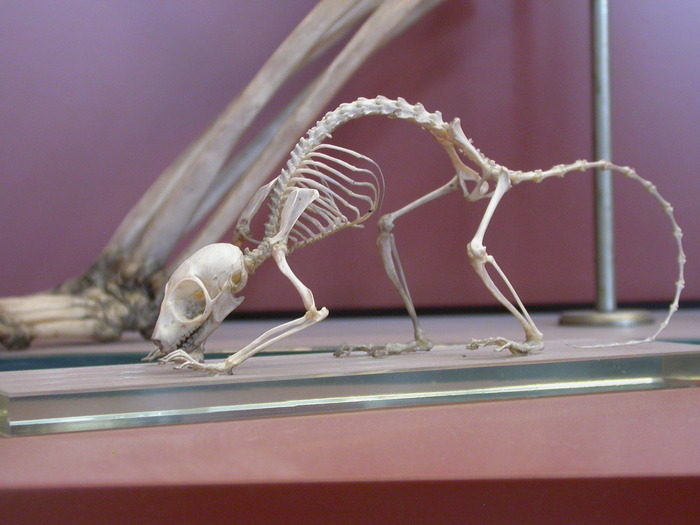
A rat? No, this is the smallest of the primates, Microcebus murinus, the gray mouse lemur. How would one ever know? Note that the eyes face forward: rodents' eyes are more to the side. Note that the nose is relatively short without a bulge for olfactory bulbs. The leg bones also more closely resemble ours than other mammals (the tibia and fibia in the lower rear legs are similarly sized, where in mice the fibula is very small... even compared to the rest of the mouse.)
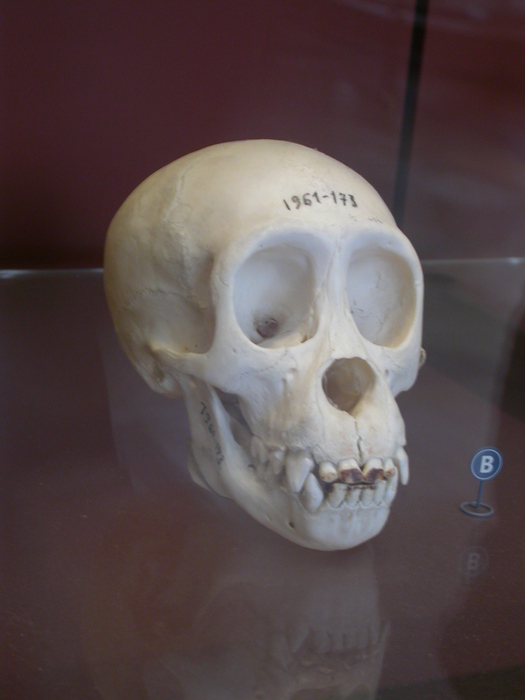
A vampire? No, this is a young chimp. An adult chimp skull has a prominant eyebrow ridge, prominant canine teeth, and a jaw structure that is thrown forward to provide enough bone to support those large canines. At this age, other than having slightly larger canine teeth and orbits (eye holes) which are taller in the vertical dimension than the horizontal (giving him a somewhat surprised look), this skull looks very much like a human.
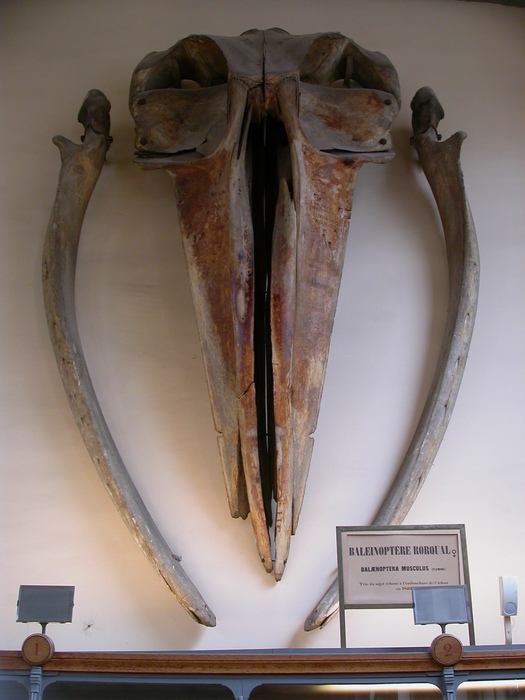
Skull and jaws of a blue whale, Balaenoptera musculus.
They say that in 1842 on a plantation in Alabama
The slaves unearthed a huge skeleton,
the bones of a giant whale,
a leviathan...
And the slaves looked at the huge bones and they said:
These must be the bones of a fallen angel...
- Laurie Anderson, Pieces and Parts
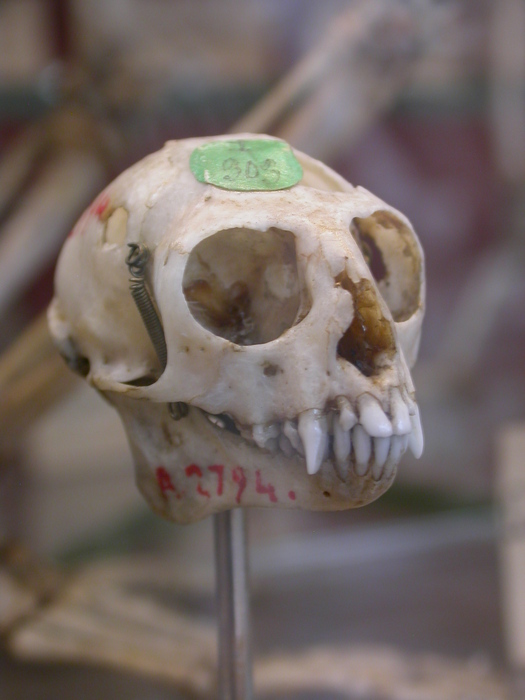
This one, though, is a tamarin, Saguinus midas, as are the two photos below. Note the spring-hinged jaw positioned so that the jaw will open naturally.
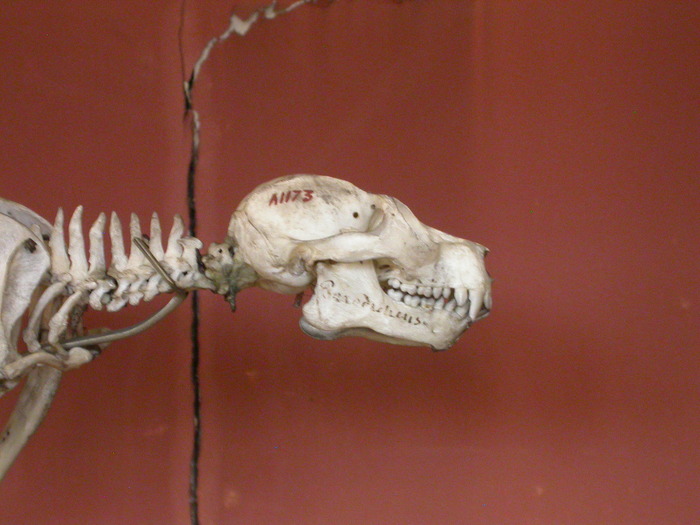
Perodicticus geoffroyi, a primate called a potto
. It lives in continental Africa, even though it more closely resembles the lemurs than it does the apes and monkeys. Note the long spinous processes of the neck vertebrae: when threatened, it will hide its head and neck-butt its attacker. One might wonder how a creature who uses its neck for defense has managed to survive, but apparently they are quite common throughout northern and central Africa.
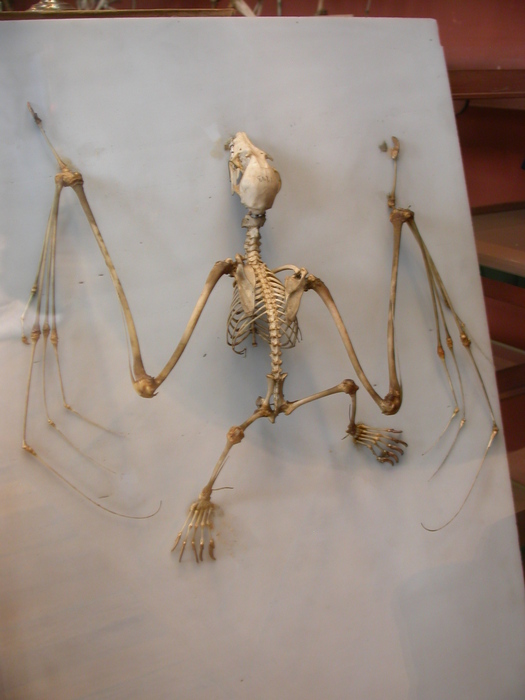
Rather obviously, a bat. Unlike birds, bats have essentially the same bones that we do, but the fingers have grown into support for wings.
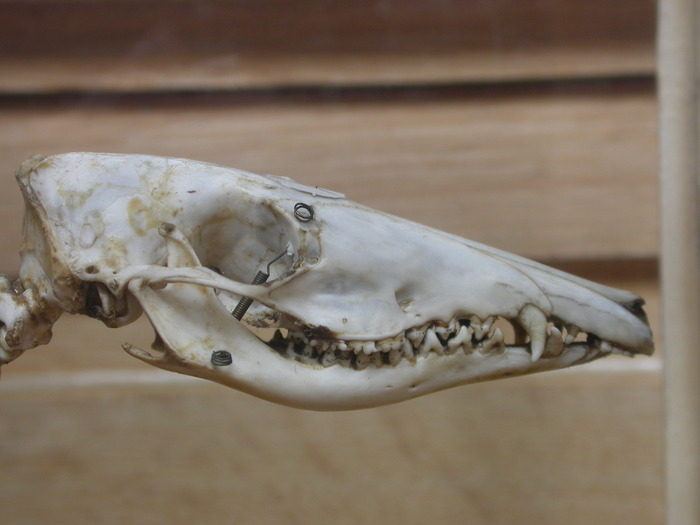
Perameles nasuta, the long-nosed bandicoot. A marsupial that looks like a giant mouse with its nose stretched too long, found in Australia.
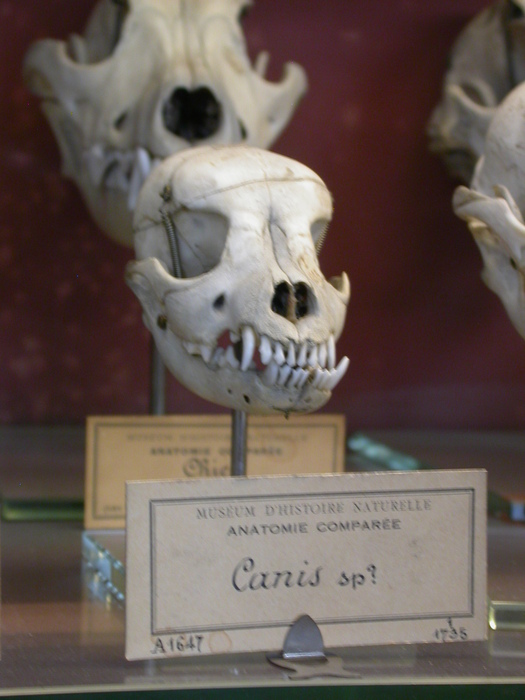
You have to love finding question marks in a museum. The teeth are typically canine. The nose is rather short, with a domed head. This could easily be a domestic dog, but perhaps there is some reason for uncertainty.
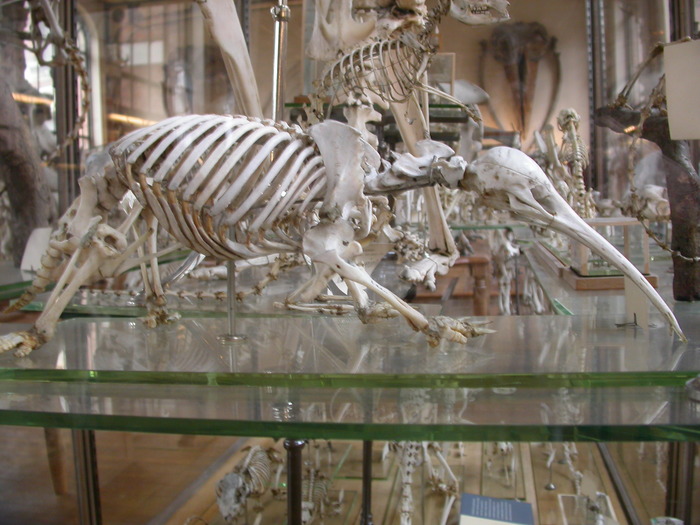
You may think that someone put a bird nose on a pig's feet and a turtle's belly, and you wouldn't be far off. This is an echinda, one of the world's two egg-laying mammals (the platypus is of course the other). In addition to laying eggs, its legs are positioned to the side, as in reptiles. It also has a cloaca (a single multipurpose urinary/defecatory/reproductive tract), a trait also shared with reptiles. It forms a single egg which is retained internally and actively nourished for some time, and then lays the egg directly into its pouch. When the young echinda hatches, it drinks milk from milk-producing pores in the pouch (echidnas do not have nipples).
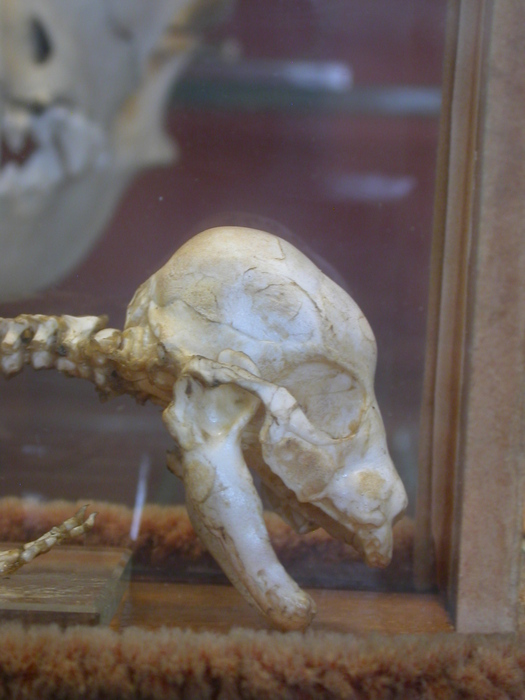
The skull of a newborn wolf. Note that its head is relatively domed, its nose is short, and its upper jaw is a bit short relative to the lower one. It lacks the large ridge on the top of the skull: this is because the ridge is an attachment point for chewing muscles, which of course the pup doesn't have yet.
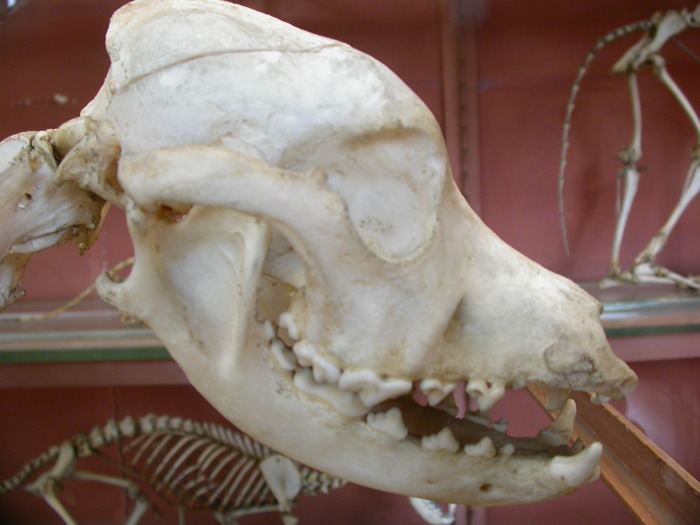
Given what I have just said, you might guess that this one is a juvinile wolf: note the relatively short nose, the slightly shortened upper jaw relative to the lower, and the smaller ridge on the back of the skull. This, though, is our domestic dog, Canis familiaris.
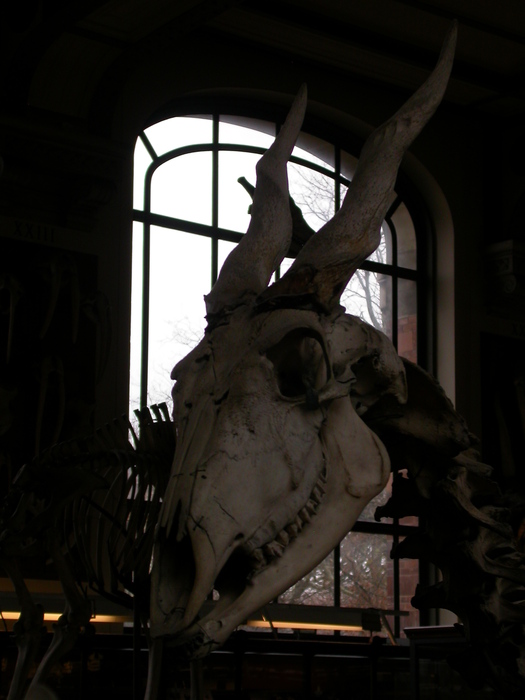
I like the slightly-upward angle and backlight in this photo. This is probably a Taurotragus derbianus, or giant eland, a kind of antelope.
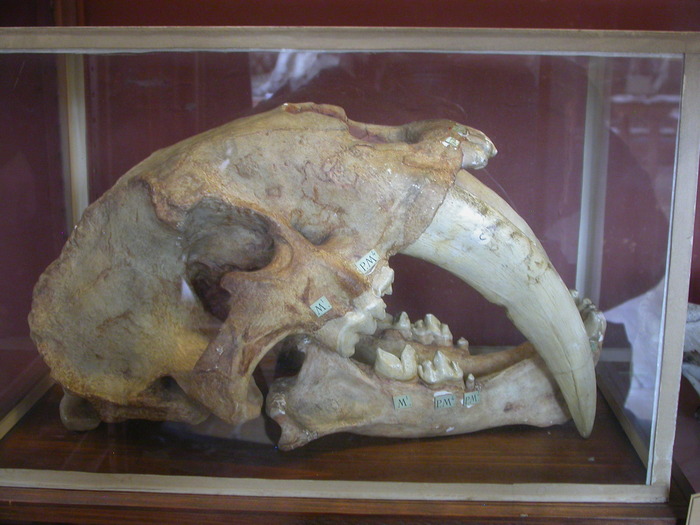
Although there were dozens of species of saber-toothed cats spanning the globe for millions of years, all are now extinct. This one is probably a Smilodon, which disappeared very recently on the global scale, about 9,000 years ago. To put things in perspective, our ancestors would have been settling in around Mesopotamia with their domestic sheep around that time.
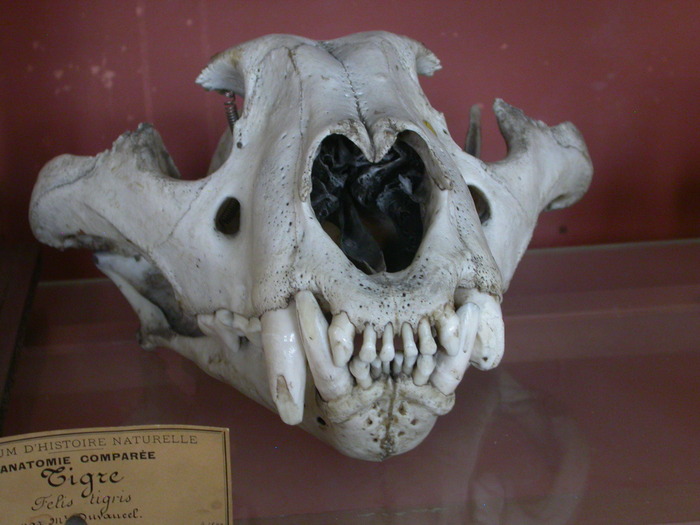
A modern tiger. Note the much larger cheek-bones (zygomatic arches) as compared to the Smilodon above. This tells us that modern tiger has a much more powerful bite. Smilodon was a stocky animal, with powerful bear-like forearms. It probably relied on the power in its neck and back to drive its teeth into its prey, rather than using the lower jaw to power its bite. This would have made Smilodon rather slow, but well suited to ambushing and overpowering its prey.
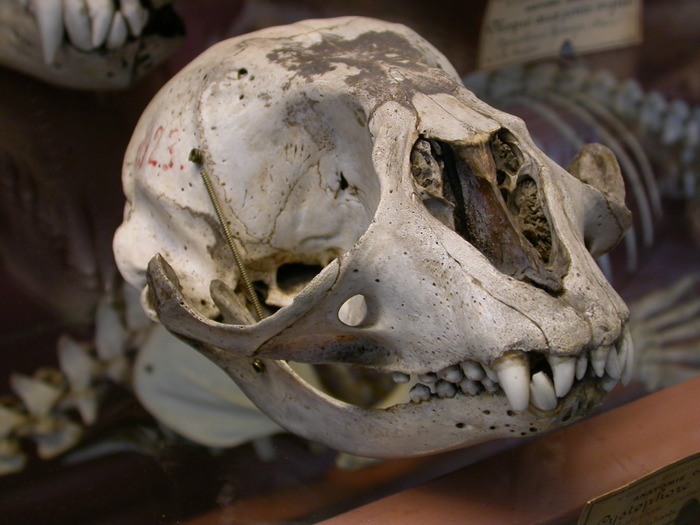
What is this odd creature? A domed head, a short nose which narrows quickly, the sharp teeth of a hunter but not the large molars of dogs and cats... Turns out this is Cystophora cristata, the hooded seal. The females look pretty much like other seals, but the males have a loose pouch of skin on their nose which they can inflate to display a kidney-shaped red balloon of tissue. This display is a threat to other male seals, althogh inverting a big red thing out of your nose seems more like a gross-out contest than a threat to me.
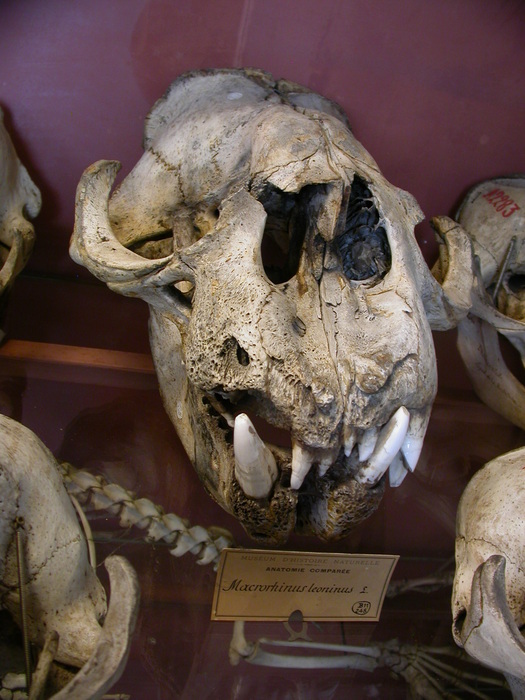
What about this beast? Its nose is very large... in fact the whole skull is huge, slightly larger than the tiger's skull in the next cabinet. The fact that its teeth are similar to the hooded seal is a good hint: this is an elephant seal (modern name Mirounga leonina). The size of the skull does fit the animal, at 6,000 pounds and 16 feet long.
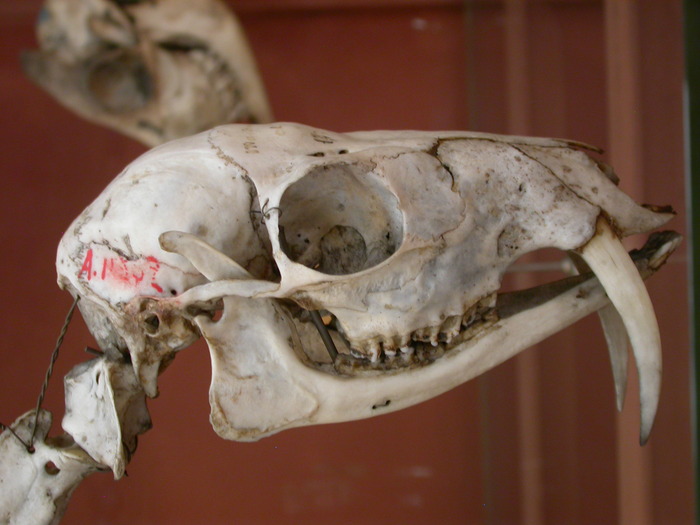
Another saber-toothed cat? No, a close look at the incisors shows that the upper incisors are absent, replaced by a flat plate, and the lower incisors are pointed forward. This same structure appears in the cow and other bovids. This vicious-looking creature is a kind of deer, specifically Moschus moschiferus, the Siberian musk deer.
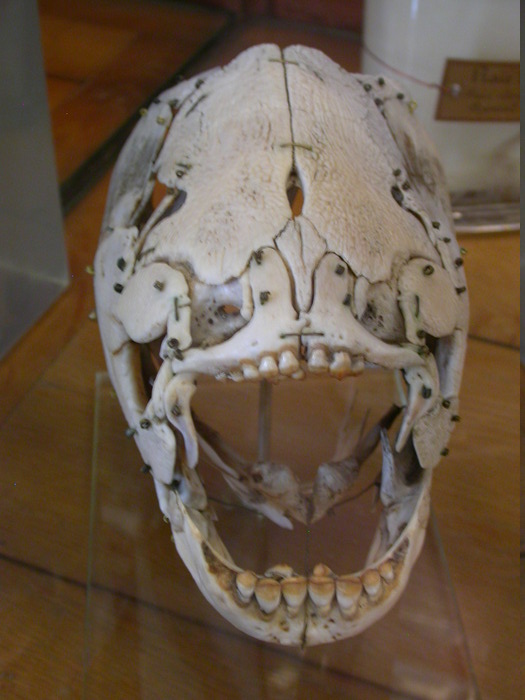
At first glance the teeth look human, lending a strangely zombie-like air to the beast. From the side, though, it is clearly a fish.
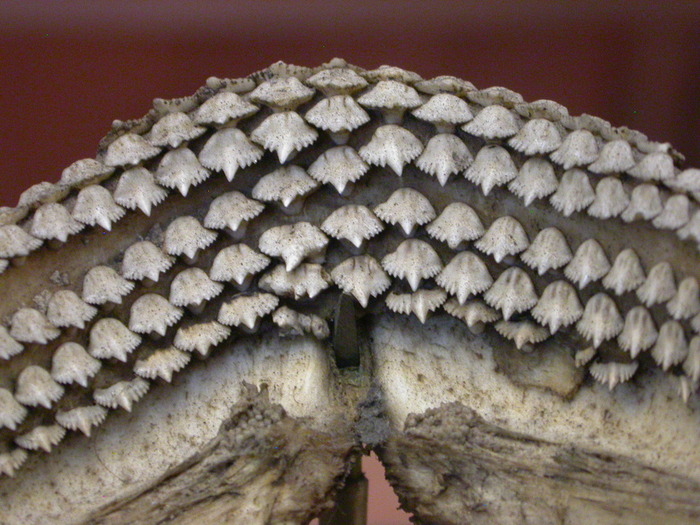
Many names listed in this museum are out of date. The card says Ginglymostoma concolor, which was the name given by Rüppell in 1837, but Lesson beat him to the name in 1831 with Nebrius ferrugineus, the tawny nurse shark.
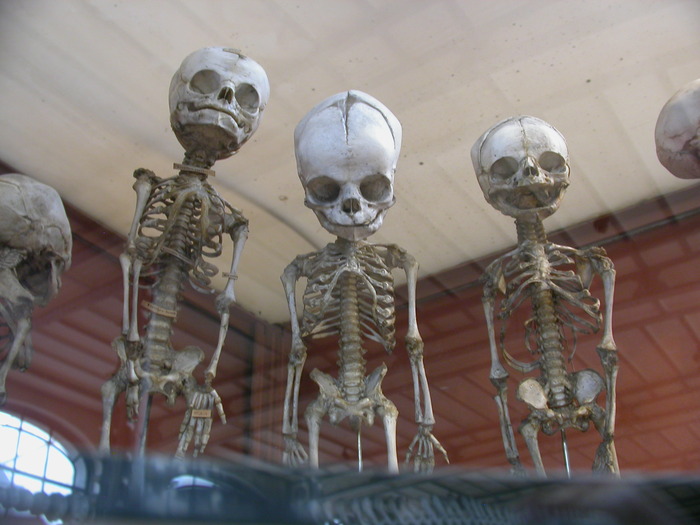
This may be my favorite picture from the museum. Partly because fetal skeletons are kind of creepy. Partly because they look like they're looking at you. And partly because they look so happy about it.
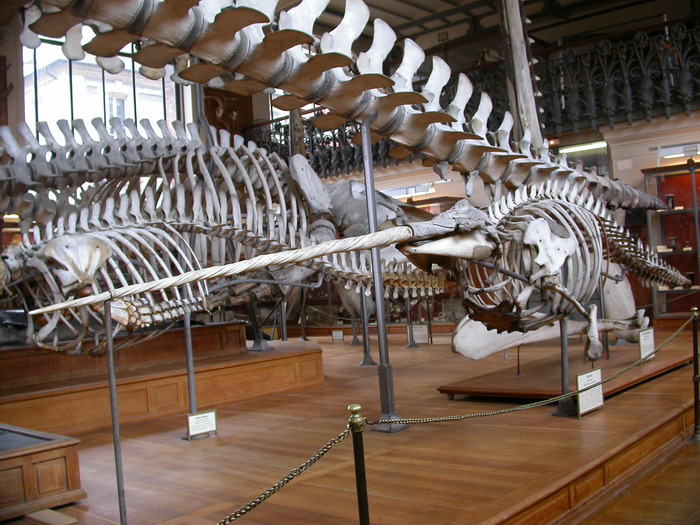
The true unicorn, the narwhal. The males of this whale species have a single long tusk, although rarely they have two.
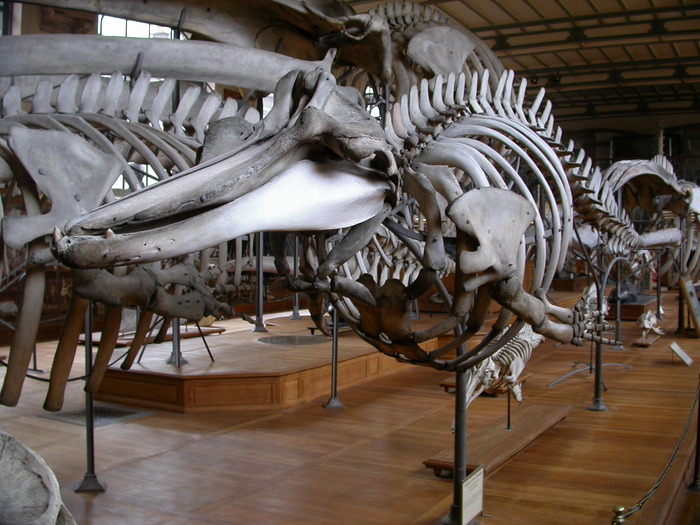
Anoux's beaked whale. Beaked whales spend most of their time at the bottom of the ocean, and thus several species have been discovered only recently. The protruding lower jaw with its large teeth are the distinguishing character of the group of beaked whales. Arnoux's is one of the larger whales in the group, and one of the earliest to be recognized, described by the French biologist Duvernoy in 1851.
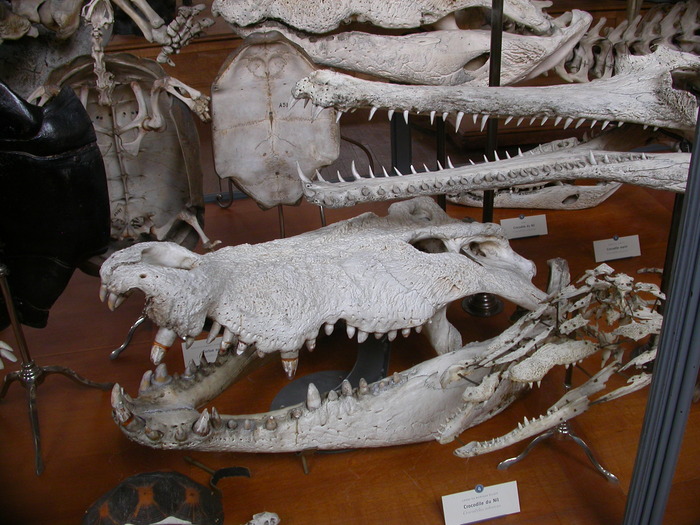
The difference between an alligator and a crocodile, illustrated in magnitude. The Nile crocodile skull on top is about a meter long.
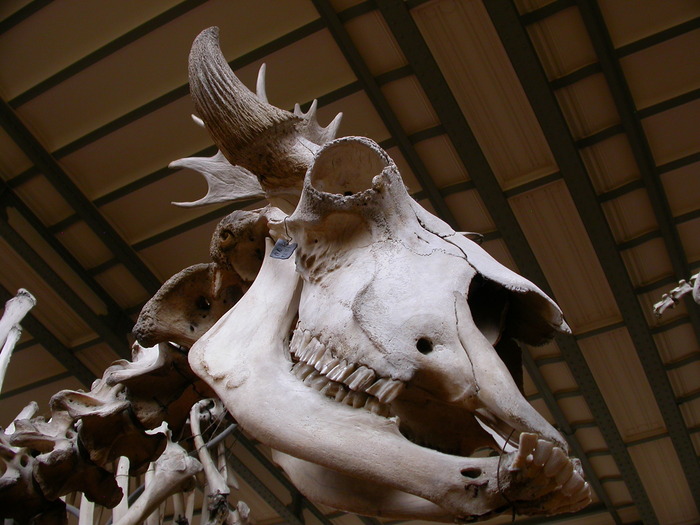
This bovid seems to have evolved safety goggles. Most animals don't have quite this much eye protection.